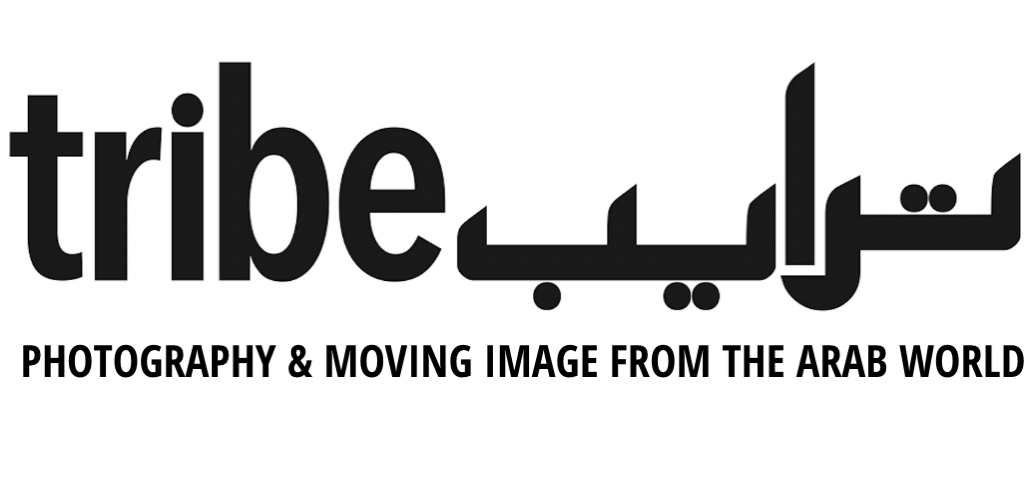Estabrak Al Ansari: Poetry, Beauty and Power
A catalyst for thought and an instrument for change
Estabrak Al Ansari, Mufuddel (‘privileged’ in Arabic) from the series Omanis Under Water (2015). Courtesy of the artist.
With text by Flounder Lee, artist, educator and curator.
Like others of her generation, Estabrak Al Ansari is a mix of cultures. She is Iraqi, but born in Iran in 1986. She then moved to London at age 5. She now has a studio on the beach in Oman. Like her background, her work is also a chimeric mix of influences and subject matter. Her media is split between lens-based work and painting. These media come together in a unique way in her Live.Projection.Painting works.
In Estabrak’s striking photographic series Omani’s Under Water, a strange scene evolves. The title gives much away, but doesn’t allow for the surreal, beautiful serenity of headless people taken from under the waves. Mufuddel shows two people riding a bike, submerged to their shoulders. Laila, which means night in Arabic, shows someone floating on the surface, with bits of marine plants throughout the water that look like stars. Like her subjects, “I often find myself in the sea, contemplating projects and the next steps forward in my life.”
Live.projection.Painting is a multidisciplinary process created by Estabrak, Athena Anastasiou, and Emily Campbell-Burdette while they were collaborating in London. Since 2014, Estabrak has continued solo work on the series. The most recent incarnation was made for the 2016 Marrakech Biennale. It is a “piece about the continuous complexities that come with women of war, women with natural strength and courage,” Tales of the Mother Tongue: Part 01 is a story of female Berber warriors. These warriors do not appear in history books, but they survive in folktales. This theme reflects Estabrak’s interest in the underrepresented, not to mention feminism and mythology. Similar themes run through another of her Live.Projection.Painting works, Jin and Motion.
These performances are ethereal. They are at times frenetic and intense, at times calming and soothing. As the performers, who often include the artist herself, use their hands to paint large white swaths onto the clear plastic, more of the projected images and videos appear. In regards to the technique, Estabrak states she has “come to realize that it is a process of painting a film to life, live. Reality, space and time are questioned via the physical layering of images.” In one of the collaborative works, a performer appears in the projection, then physically cuts through the plastic screen to become part of the work, painting herself instead of the screen.
As to her migration story, she states, “Coming from a refugee background, from a country that has been through so much turmoil and having daily dialogues about safety especially in regards to family back in our homeland, it can never escape me where I or my family are from.”
In one of her video works, Estabrak brings a poem by Anthony Anaxagorou to life. In the Master’s Revenge, the poet’s powerful spoken narration starts over a seemingly still frame, a black and white image of a crying woman’s face. The tear gently reverses track, then the whole video zooms out gradually but steadily on a Shakespearean setting. The scene is multi-cultural and intense. People from seemingly different time frames move about, the crying woman is now giving a monologue or heartfelt speech. The poem continues, with music throughout. It is a story about social injustice. The poem is evocative and moving:
Do not negate your women. There is more feminism than her physical appearance, you may wish to talk about Simon De Beauvoir, bell hooks and Angela Davis than poetry, the spoken word that predates the written word oral tradition, art and storytelling.
In all of these projects, there is poetry, beauty, and power. Estabrak Al Ansari deals with representation and status, tackling subjects like female warriors and social justice with compelling images. One of the projects she is currently working on is a short film about the refugees at sea. She continues to make work because “I had the opportunity of education, free health care and safe living. An opportunity unfortunately not offered to so many people globally today. I feel for that reason a lot of what I do or the collaborations I work with are through/about projects that may somehow be a catalyst for thought and an instrument for change.”


